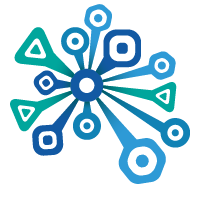Urgent Kraken Wallet Issue Update Affects Cryptocurrency Exchange Users
In the fast-paced world of digital assets, seamless access to your funds is paramount. That’s why recent reports of a significant Kraken wallet connection issue have caught the attention of users across the platform. As a leading crypto exchange, any technical hiccup at Kraken can impact a large number of traders and investors.
U.S. cryptocurrency exchange Kraken has officially acknowledged a technical problem impacting how users connect to their digital wallets on the platform. The core of the issue appears to be related to the wallet connection process itself.
According to Kraken’s statements, users attempting to access their wallets may encounter several frustrating experiences, including:
This issue specifically pertains to the integrated wallets users manage directly within the Kraken exchange platform, rather than external self-custody wallets.
For any crypto exchange, the wallet function is the gateway for users to interact with their digital assets. It’s where your Bitcoin, Ethereum, and other cryptocurrencies are held (or more accurately, where the private keys controlled by the exchange that give you access to those funds are linked).
A reliable wallet connection is essential for several key functions:
When the Kraken wallet connection fails, all these fundamental activities become impossible or severely hindered, leading to significant user frustration and potential financial implications, especially in volatile market conditions.
Upon identifying the problem, Kraken has stated they are actively investigating the root cause of the wallet connection issue. Transparency and timely communication from a cryptocurrency exchange during such incidents are crucial for maintaining user trust.
While the initial announcement indicated an investigation was underway, users should monitor Kraken’s official communication channels for updates. These typically include:
Staying informed through these verified sources is the best way for users to understand the progress of the fix and when normal service is expected to resume for the Kraken wallet.
Beyond the immediate frustration of not being able to access funds, the Kraken wallet connection problem presents several challenges:
1. Trading Limitations: If you can’t see your balance or access your wallet, you cannot make timely trades. In a market known for rapid price swings, this can mean missed opportunities or the inability to react to sudden drops or pumps.
2. Uncertainty and Anxiety: Not being able to view your assets can be stressful for any investor. Users may worry about the safety of their funds, even if the underlying issue is technical and not a security breach.
3. Deposit and Withdrawal Halts: The inability to move funds on or off the exchange locks users into their current positions, regardless of their needs or external market factors.
4. Planning Disruptions: Investors who planned to make specific transactions at a certain time based on market analysis find their strategies disrupted by the unexpected outage.
These challenges highlight just how vital a stable and reliable platform is for a major cryptocurrency exchange like Kraken.
If you are a Kraken user affected by this wallet connection issue, here are some actionable steps you can take:
Remember, Kraken is investigating the issue, and their technical teams are working to restore full functionality to the Kraken wallet and the platform as a whole.
Incidents like the Kraken wallet connection issue, while frustrating, are not entirely uncommon in the rapidly evolving world of cryptocurrency exchange platforms. Technical glitches can arise from various factors, including software updates, infrastructure load, or external network problems.
What distinguishes a reliable platform is not necessarily the absence of issues, but the speed and effectiveness of their response, their communication with users, and their ability to implement long-term solutions to prevent recurrence.
Users of any crypto exchange should be aware that platform downtime is a possibility and factor this into their trading and investment strategies, especially during periods of high market volatility.
The current Kraken wallet connection issue serves as a reminder of the technical complexities underlying even the most popular cryptocurrency exchange platforms. While frustrating for users unable to access their funds or trade, Kraken has acknowledged the problem and is working towards a resolution.
For affected users, the best course of action is to remain patient, rely solely on official Kraken communication channels for updates, and take basic security precautions. As the investigation progresses, the crypto community will be watching for Kraken to restore full functionality and provide insights into the cause of the disruption to their wallet connection services.
To learn more about the latest crypto market trends, explore our article on key developments shaping cryptocurrency exchange reliability and trading.
Disclaimer: The information provided is not trading advice, Bitcoinworld.co.in holds no liability for any investments made based on the information provided on this page. We strongly recommend independent research and/or consultation with a qualified professional before making any investment decisions.
Escaping the Cycle of Poverty: A Guide
To break free from poverty, we need a detailed plan. This plan must tackle the main reasons for poverty and help the economy grow in a lasting way. Poverty is a big problem worldwide, trapping millions in a never-ending cycle.

Edit
Full screen
View original
Delete
Poverty
Good poverty alleviation plans mix education, creating jobs, and social help. Knowing how poverty works helps us make better plans. These plans aim to move people up the economic ladder and make life better for everyone.
Key Takeaways
Understanding the root causes of poverty is crucial for developing effective alleviation strategies.
A comprehensive approach is necessary to break the cycle of poverty.
Education and job creation are key components of poverty alleviation.
Social support systems play a vital role in promoting economic mobility.
Sustainable economic growth is essential for long-term poverty reduction.
Understanding the Cycle of Poverty
It's important to understand the cycle of poverty to find ways to solve it. Poverty affects not just people but also communities and society as a whole.
What Defines Poverty in Modern America
In modern America, poverty means not having enough resources for a good life. It's not just about money. It also means not having access to education, healthcare, and other basic needs.
How Generational Poverty Becomes Cyclical
Generational poverty happens when families stay poor for many generations. It's caused by things like not having good schools, few job chances, and not enough help from society. To break this cycle, we need specific actions that tackle these problems.
Edit
Delete
Current Statistics on Poverty in the United States
The latest numbers show the U.S. still has a big problem with poverty. Knowing these numbers is key for those trying to help people who are poor.
Urban vs. Rural Poverty Rates
Poverty rates vary between cities and rural areas. Rural places often have higher rates because of fewer jobs and less access to resources.
Demographic Disparities in Poverty
Poverty hits some groups harder than others. For example, some minorities and kids are more likely to be poor. Fixing these imbalances is essential to lowering poverty overall.
Looking at poverty statistics and understanding why it happens helps us create better plans to fight it.
Root Causes of Persistent Poverty
Poverty is a complex issue with many causes. It involves systemic, individual, and economic factors. Knowing these causes is key to fighting poverty effectively.
Systemic and Structural Barriers
Systemic barriers are a big part of the problem. They include:
Limited access to quality education and job opportunities
Inadequate healthcare and social services
Discriminatory policies and practices
Limited Access to Resources
Not having enough resources like education and healthcare makes it hard to get out of poverty. Investing in these resources is crucial for breaking the cycle of poverty.
Discrimination and Inequality
Discrimination and inequality make poverty worse by limiting opportunities for some groups. Addressing these issues through policy reforms and social programs is vital for creating a more equitable society.

Edit
Full screen
View original
Delete
causes of poverty
Individual and Family Circumstances
Family structure, health issues, and lack of education can also lead to poverty. Supporting families through targeted social programs and services can help mitigate these factors.
Economic Factors Contributing to Poverty
Economic factors like unemployment, low wages, and economic downturns also contribute to poverty. Promoting economic growth and job creation are essential strategies for reducing poverty.
The Far-Reaching Effects of Poverty
Poverty affects many areas of life, including health, education, and economic stability. It impacts individuals, families, and communities deeply.
Impact on Physical and Mental Health
Poverty harms both physical and mental health. It limits access to healthcare and leads to poor living conditions and bad nutrition. Chronic stress and anxiety can make these health problems worse, creating a cycle of poor health and poverty.
As Dr. David Ansell, author of "The Death Gap: How Inequality Kills," points out, "Poverty greatly affects health outcomes. To improve health equity, we must address poverty."
"The relationship between poverty and health is complex and bidirectional, with poverty contributing to poor health and poor health perpetuating poverty."
Educational Disadvantages and Consequences
Poverty also affects education. Children from low-income families face many barriers to success. These include limited access to quality education, inadequate resources, and unstable home environments. This can lead to lower grades, fewer chances for college, and limited career options.
Long-term Economic and Social Implications
Poverty's long-term effects are significant. It limits economic and social mobility. This can affect entire communities, leading to more inequality.
Intergenerational Transmission of Poverty
Poverty can pass from one generation to the next. Children from low-income families are more likely to stay poor as adults. This limits their chances for economic success.
Community-Wide Effects
Poverty also affects communities. It leads to social isolation, fewer job opportunities, and higher crime rates.
Edit
Delete
To tackle poverty, we need a broad approach. Understanding how poverty affects health, education, and the economy helps us find ways to end it.
Developing a Poverty Escape Plan
To break the cycle of poverty, you need a solid plan. This plan should have clear goals and strategies for financial stability. It acts as a guide, helping you reach economic self-sufficiency.
Setting Realistic Short and Long-Term Goals
First, set clear, achievable goals. These goals should cover both immediate needs and long-term financial stability. Short-term goals might be finding a stable job or managing debt. Long-term goals could be saving for education or retirement.
Creating a Personal Roadmap to Financial Stability
Creating a roadmap to financial stability involves several steps. Start by assessing your current financial situation. This includes your income, expenses, debts, and assets. From there, you can identify areas for improvement and make a budget.

Edit
Full screen
View original
Delete
poverty escape plan
Measuring Progress and Adjusting Strategies
It's important to track your progress. Regularly review your financial milestones and adjust your strategies as needed. Tracking financial milestones keeps you motivated and focused.
Tracking Financial Milestones
Identify and track key financial milestones. This could be paying off debt, building an emergency fund, or reaching savings goals. Celebrating these milestones boosts your commitment to your long-term goals.
Celebrating Small Victories
Celebrate small victories to keep your morale and motivation up. Achievements like completing a budgeting cycle or getting a better job are big steps towards financial stability.
Milestone
Target Date
Status
Pay off credit card debt
6 months
In Progress
Build emergency fund
12 months
Not Started
Increase income by 20%
9 months
In Progress
By following a well-structured poverty escape plan, you can make big strides towards financial stability. Effective poverty reduction strategies and poverty alleviation efforts are key in supporting these efforts.
Building Essential Financial Literacy Skills
Financial literacy is key to escaping poverty. It starts with learning basic but powerful financial skills. People wanting to improve their finances need to know how to manage money well.

Edit
Full screen
View original
Delete
poverty solutions
Mastering Basic Budgeting Techniques
Good budgeting is the base of financial literacy. It means keeping track of money coming in and going out. This helps make smart money choices.
Zero-Based Budgeting for Limited Income
Zero-based budgeting means every dollar is for a specific expense or savings goal. It's great for those with little money, as it makes sure every resource is used well.
Prioritizing Needs vs. Wants
It's important to know the difference between needs and wants. Must-haves like rent, utilities, and food come first. Then, you can spend on things like eating out or fun.
"The key to financial stability is not just earning more, but also managing what you have."
— Dave Ramsey, Financial Expert
Understanding and Managing Credit
Handling credit well is crucial for financial health. This means knowing your credit score, avoiding high-interest debt, and using credit wisely.
Credit Type
Interest Rate
Benefits
Credit Cards
High
Rewards, Convenience
Personal Loans
Variable
Fixed Repayment Terms
Mortgages
Low
Long-term Financing
Strategic Saving on a Limited Income
Saving money when you don't have much needs discipline and a plan. It means setting aside a part of your income regularly.
Emergency Fund Building
Having an emergency fund is vital for financial stability. It acts as a safety net for unexpected events like losing a job or needing medical care.
Automated Saving Methods
Using automatic savings, like direct deposit or transfers, makes saving easier. It helps avoid forgetting to save.
Learning these financial skills helps people move towards poverty reduction strategies and financial stability in the long run.
Education and Skill Development Pathways
Getting out of poverty often starts with better education and skills. Education helps people get good jobs and improve their lives. It's a key tool in the fight against poverty.
Accessing Educational Opportunities
Getting to education is the first step to fight poverty. People looking to learn more can find financial help and flexible programs.
Financial Aid and Scholarship Resources
There are many ways to get money for school. Some include:
Federal Pell Grants
Federal Supplemental Educational Opportunity Grants (FSEOG)
Private scholarships from organizations and foundations
Part-Time and Flexible Learning Options
For those who can't go full-time, there are other choices. Options include online classes, part-time college, and vocational training.
Vocational Training and Certification Programs
Vocational training leads to jobs in specific fields. These programs are shorter than college and help people start working fast.
Leveraging Free and Low-Cost Learning Resources
There are also free and cheap ways to learn. These can help people get new skills and find jobs.
Online Courses and Digital Skills
Online sites like Coursera, edX, and Udemy have many courses. They include digital skills that employers want.
Library and Community Education Programs
Local libraries and community centers offer free or cheap classes. They have literacy, computer skills, and vocational training.
Using these educational chances and skill paths can really help people get out of poverty. It can lead to financial stability.
Employment Strategies and Income Generation
To get out of poverty, people need to find good jobs and have more than one way to make money. It's important to have solid job plans to earn a steady income and get financially stable.
Effective Job Search Techniques and Resources
Looking for jobs online, networking, and making resumes fit job ads are key steps. Job seekers should also use social media to get noticed by employers.
Building Marketable Skills for Higher Wages
Getting skills that employers want is crucial for better-paying jobs. You can do this through vocational training, certifications, and online classes.
In-Demand Skills with Low Entry Barriers
Skills like digital marketing, data analysis, and customer service are in demand. They can be learned quickly.
Upskilling While Employed
Many workers can learn new skills while still working. They can use employer training or online courses that fit their schedules.
Exploring Side Hustles and Entrepreneurship Options
Starting a side business or freelancing can add to your income. This can help you get out of poverty faster.
Low-Investment Business Ideas
Starting a business with little money is possible. You can sell handmade items, offer tutoring, or freelance in writing or design.
Balancing Multiple Income Streams
Managing different ways to make money well is important. It helps you earn more and stay financially stable.
Employment Strategy
Description
Potential Income Increase
Job Search Techniques
Utilizing online job boards and networking
20-50%
Skill Development
Acquiring in-demand skills through training
30-70%
Side Hustles
Engaging in freelance or entrepreneurial activities
10-30%
Navigating Government and Community Assistance
It's important to know how to use government and community help to fight poverty. These programs offer support and resources to those in need. They help people move from poverty to financial stability.
Understanding Available Benefits Programs
There are many government programs to help those in poverty. Two main ones are Temporary Assistance for Needy Families (TANF) and the Supplemental Nutrition Assistance Program (SNAP).
Temporary Assistance for Needy Families (TANF)
TANF gives money to low-income families with kids. It aims to help them become self-sufficient.
Supplemental Nutrition Assistance Program (SNAP)
SNAP helps with food for those who qualify. It fights food insecurity and supports health.
Application Processes and Eligibility Requirements
It's key to know how to apply and what you need to qualify. Each state has its own rules. These depend on income, family size, and if you work.
Using Assistance as a Stepping Stone to Self-Sufficiency
These programs do more than just help right now. They aim to help people be financially stable for the long term.
Benefit Cliffs and Transition Planning
A "benefit cliff" happens when you lose benefits because your income goes up a bit. This can mess up your finances. Planning your move to self-sufficiency is crucial.
Combining Benefits with Employment
Many programs let you keep getting benefits while you work. This helps increase your income and makes moving to self-sufficiency easier.
Here's some data on how these programs can help:
Program
Average Monthly Participants
Success Rate
TANF
1.5 million
65%
SNAP
40 million
70%
By using these government and community programs, people can make big steps towards leaving poverty behind and achieving financial stability.
Conclusion: Creating Sustainable Pathways Out of Poverty
Getting out of poverty needs a mix of strategies and solutions. Knowing why poverty exists and its effects helps people make a plan for financial stability.
Important steps include learning about money, getting an education, and finding jobs. Also, using government and community help is crucial during tough times.
To stay out of poverty, set goals, track progress, and change plans if needed. This way, people can overcome poverty and achieve lasting financial security. It's about learning, growing skills, and working together as a community.
Overcoming poverty is a long journey that needs determination, strength, and support. Giving people the tools and resources they need helps them build a better future. This way, we can make society fairer for everyone.
FAQ
What is the cycle of poverty?
The cycle of poverty is a complex process. It passes from one generation to the next. It keeps people in a state of economic struggle and limited opportunities.
How does poverty affect physical and mental health?
Poverty greatly affects both physical and mental health. It increases the risk of chronic diseases and mental health issues. It also shortens life expectancy due to poor healthcare, living conditions, and stress.
What are some effective strategies for escaping poverty?
To escape poverty, one can create a plan, learn about money, and get an education. Using job strategies and finding ways to make money are also key.
How can education and skill development help alleviate poverty?
Education and skills are crucial in fighting poverty. They help people get better jobs and improve their economic situation. This can break the cycle of poverty.
What role do government and community assistance programs play in poverty alleviation?
Government and community programs offer vital support. They provide a safety net, access to services, and help towards self-sufficiency.
How can individuals measure progress and adjust their poverty escape plan?
To track progress, individuals should follow financial goals and celebrate small wins. Regularly review goals and strategies. Make changes as needed to stay on track.
What are some common barriers to escaping poverty?
Barriers include limited resources, systemic issues, personal and family challenges, and economic factors. These include job scarcity and low wages.
How can individuals build marketable skills for higher wages?
To gain skills, individuals can take vocational training, use free learning resources, and develop in-demand skills. This requires low entry costs.
What are some effective job search techniques and resources?
Good job search methods include a strong resume, networking, and online job boards. Career counseling and job training programs offer valuable support.
How can individuals balance multiple income streams?
Balancing income streams requires prioritizing tasks, managing time well, and diversifying income. This can include side hustles or starting a business. It helps reduce financial stress and increases stability.



 Lowest price
Lowest price Highest price
Highest price 































.png)











